order

Coleoptera
“Adult Beetles”

Coleoptera
“Larval Beetles”

Diptera
“True Flies”

Ephemeroptera
“Mayflies”

Hemiptera
“True Bugs”

Lepidoptera
“Aquatic Caterpillars, Snout Moths”

Megaloptera
“Alderflies, Dobsonflies, and Fishflies”

Odonata
“Dragonflies and Damselflies”

Plecoptera
“Stoneflies”

Trichoptera
“Caddisflies”
family
Taeniopterygidae
genus
Strophopteryx
“Broadbacks, Winter Stoneflies”
Genus Overview
5 species in North America, Length of mature specimens 8-13mm, yellow or tan, large coxa, univoltine, found in stony areas of stream,
Characteristics
POLLUTION TOLERANCE
Southeast: 2.5
Upper Midwest: 3
0 = least tolerant, 10 = most tolerant
FEEDING HABITS
Shredder / Detritivore
MOVEMENT
Clinger
Sprawler
Sprawler
DISTRIBUTION
Widespread (east of the Rocky Mtns.)
HABITAT
Lotic-depositional
Lotic-erosional
Lotic-erosional
Diagnostic Characters
Order
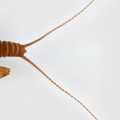
Two Tails
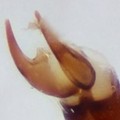
Two Tarsal Claws
Family
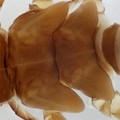
Divergent Wing Pads
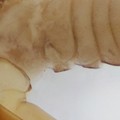
Gills Unlike Peltoperlidae
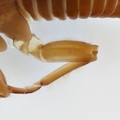
Hind Legs Don't Reach
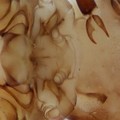
Paraglossae And Glossae Subequal
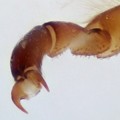
Tarsal Segments Subequal
+ Expanded Character List
Order:
Wings developing in wing pads. Mouthparts suitable for chewing. Gills digitiform and located near mouthparts, on neck, sides of thorax, or underside of base of abdomen, never on top or sides of abdomen. Two tarsal claws per leg. Only two tails (cerci).
Family:
Paraglossae and glossae about same length. Second tarsal segment of each leg about same length as first. Wing pads divergent, not parallel with body. Gills absent on abdominal segments. Unlike Peltoperlidae, gills, if present, not conical, and thoracic sterna not overlapping. Unlike Nemouridae, hind legs not reaching end of the abdomen.
Genus:
Finge of hairs on both sides of tibia (some species without), dorsal silky hairs on basal cerci segments
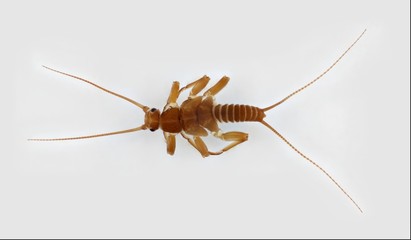
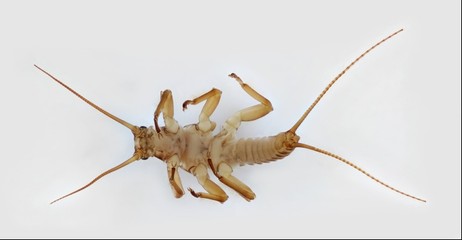
Dorsal
Ventral



